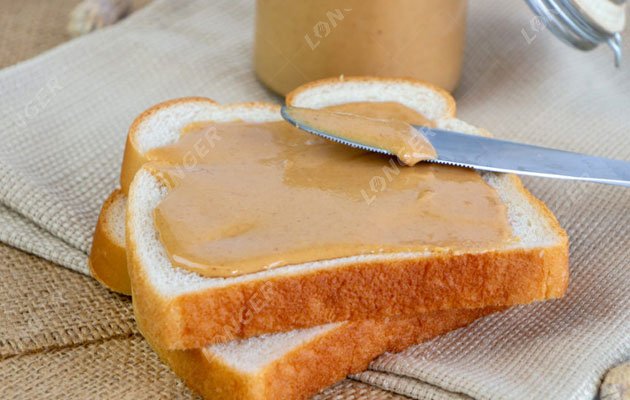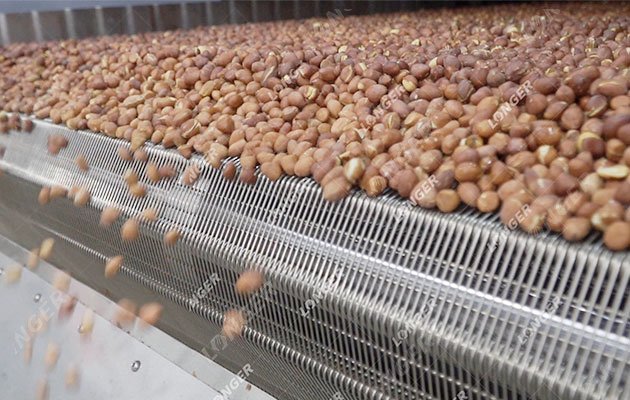The Importance of Roasting in Production of Peanut Butter
 Aug16, 2023
Aug16, 2023
 By Serena
By Serena
In the realm of delectable spreads, peanut butter stands as a timeless favorite, cherished by people of all ages around the world. Yet, behind every creamy scoop or crunchy bite lies a meticulous production process that transforms humble peanuts into the creamy delight we all know and love. One indispensable step in this journey is roasting, an essential technique that not only enhances the flavor but also ensures the safety and quality of the final product. In this article, we delve into the importance of roasting in production of peanut butter, shedding light on why it is a pivotal aspect of the peanut butter production line.

The Journey Begins: From Raw Nuts to Flavorful Gems
At the heart of every jar of peanut butter are the raw, unassuming peanuts. These tiny nuggets of nutrition pack a punch in taste and texture, but their true potential is unlocked through the process of roasting. Roasting involves subjecting the peanuts to carefully controlled heat, allowing their natural oils to be released, and their flavors to develop. This transformation not only brings out a deep, rich nuttiness but also contributes to the characteristic aroma that entices our senses. Without roasting, peanut butter would lack the complexity and depth that we associate with this beloved spread.
Flavor Enhancement and Aroma Enrichment
Roasting serves as a culinary alchemist's touch in the creation of peanut butter. The heat catalyzes a series of chemical reactions that alter the composition of the peanuts, leading to the creation of volatile compounds responsible for the enchanting scent and taste of peanut butter. These compounds include pyrazines and Maillard reaction products, which give rise to a spectrum of roasted, nutty, and slightly sweet notes. The result is a sensory experience that transcends the ordinary, elevating peanut butter from a simple ingredient to a culinary delight.
Crucial Safety Measures
Beyond flavor, roasting plays an indispensable role in ensuring the safety of the final product. Raw peanuts can potentially harbor harmful pathogens, which are eliminated through the heat of the roasting process. The high temperatures reached during roasting effectively destroy bacteria, molds, and other microorganisms that might compromise the quality of the spread. This critical step aligns with food safety regulations and standards, providing consumers with a product they can trust.

Consistency and Texture Perfection
The texture of peanut butter is a key element of its appeal. Whether you prefer smooth or crunchy, roasting is integral to achieving the desired consistency. The natural oils released during roasting facilitate the blending process, allowing for smoother, creamier textures. For those who enjoy a bit of crunch, roasted peanuts can be partially crushed, creating delightful nutty bits that add character to the spread. In either case, roasting paves the way for a consistent, luscious mouthfeel that defines high-quality peanut butter.
Conclusion: The Art and Science of Roasting
In the intricate symphony that is peanut butter production, roasting emerges as a pivotal movement that harmonizes flavor, aroma, safety, and texture. It is an art perfected through years of experience and an understanding of the science behind food transformation. As we savor every spoonful of peanut butter, let us not forget the vital role that roasting plays in bringing this simple yet sublime delight to our tables. So, the next time you enjoy a slice of toast adorned with velvety peanut butter, remember the journey it undertook, from raw nut to indulgent spread, enhanced by the magic of roasting.

The Journey Begins: From Raw Nuts to Flavorful Gems
At the heart of every jar of peanut butter are the raw, unassuming peanuts. These tiny nuggets of nutrition pack a punch in taste and texture, but their true potential is unlocked through the process of roasting. Roasting involves subjecting the peanuts to carefully controlled heat, allowing their natural oils to be released, and their flavors to develop. This transformation not only brings out a deep, rich nuttiness but also contributes to the characteristic aroma that entices our senses. Without roasting, peanut butter would lack the complexity and depth that we associate with this beloved spread.
Flavor Enhancement and Aroma Enrichment
Roasting serves as a culinary alchemist's touch in the creation of peanut butter. The heat catalyzes a series of chemical reactions that alter the composition of the peanuts, leading to the creation of volatile compounds responsible for the enchanting scent and taste of peanut butter. These compounds include pyrazines and Maillard reaction products, which give rise to a spectrum of roasted, nutty, and slightly sweet notes. The result is a sensory experience that transcends the ordinary, elevating peanut butter from a simple ingredient to a culinary delight.
Crucial Safety Measures
Beyond flavor, roasting plays an indispensable role in ensuring the safety of the final product. Raw peanuts can potentially harbor harmful pathogens, which are eliminated through the heat of the roasting process. The high temperatures reached during roasting effectively destroy bacteria, molds, and other microorganisms that might compromise the quality of the spread. This critical step aligns with food safety regulations and standards, providing consumers with a product they can trust.

Consistency and Texture Perfection
The texture of peanut butter is a key element of its appeal. Whether you prefer smooth or crunchy, roasting is integral to achieving the desired consistency. The natural oils released during roasting facilitate the blending process, allowing for smoother, creamier textures. For those who enjoy a bit of crunch, roasted peanuts can be partially crushed, creating delightful nutty bits that add character to the spread. In either case, roasting paves the way for a consistent, luscious mouthfeel that defines high-quality peanut butter.
Conclusion: The Art and Science of Roasting
In the intricate symphony that is peanut butter production, roasting emerges as a pivotal movement that harmonizes flavor, aroma, safety, and texture. It is an art perfected through years of experience and an understanding of the science behind food transformation. As we savor every spoonful of peanut butter, let us not forget the vital role that roasting plays in bringing this simple yet sublime delight to our tables. So, the next time you enjoy a slice of toast adorned with velvety peanut butter, remember the journey it undertook, from raw nut to indulgent spread, enhanced by the magic of roasting.








 Prev:
Prev:



